This week my latest paper “Nature-Inspired Algorithms from Oceans to Space: A Comprehensive Review of Heuristic and Meta-Heuristic Optimization Algorithms and Their Potential Applications in Drones” was published in Drones after about two years of collaborative work.
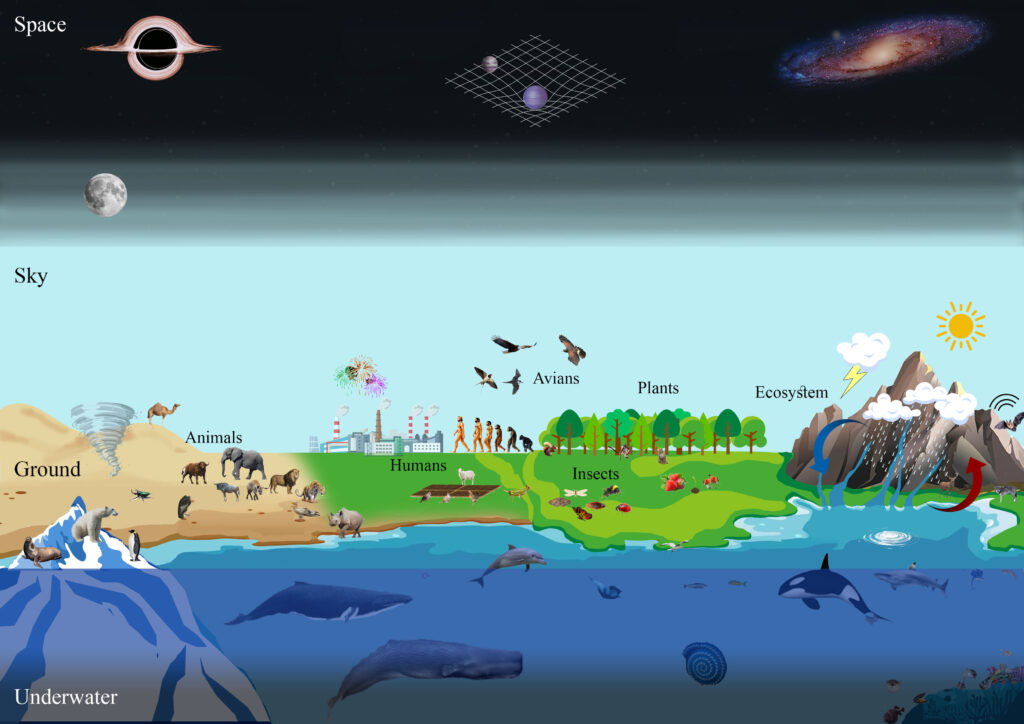
One of our goals in this project was to provide a realy comprehensive review on nature-inspired algorithms. After surveying about 350 algorithms we realized that almost any aspects of the nature including rain, water cycle, black hole, bacteries, diseases, and of course animals and insects have inspired researchers to develope optimization algorithms. Although the real inspiration of these algorithm are questioned by many researchers, and unfortunately we have observed high similarities between algorithms with different sources of inspirations, we can’t deny the performance of at least a group of these algorithms. We tried our best to provide a comprehensive classification of these algorithms. A majority of NIAs are based on animals, insects, and plants. We called them bio-based algorithms.
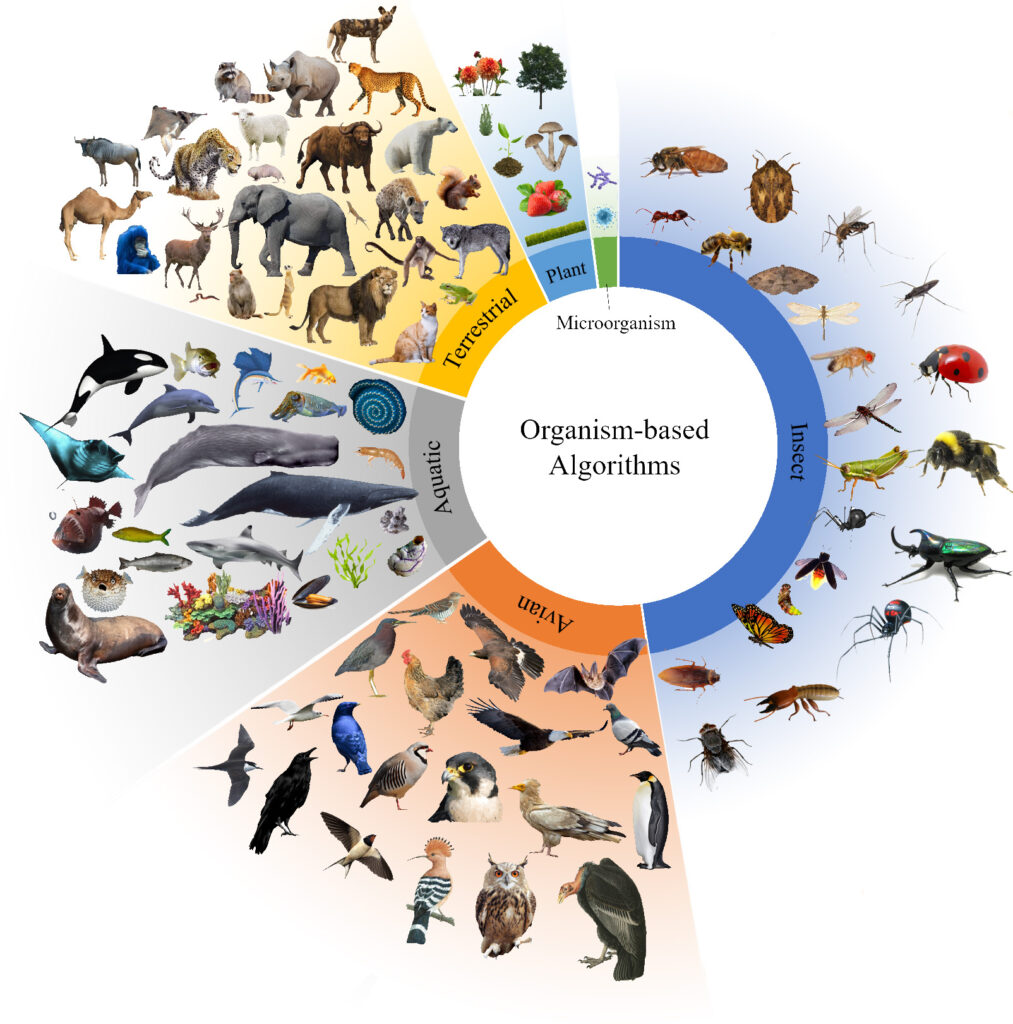
Reviewing this massive amount of algorithms was a tough work, although we knew there were a lot NIAs, but this volume of algorithms was really unexpected. This becomes more weird when you know that we selected these 350 algorithms among more than 500 algorithms available online. Diving deep into all these algorithms is really hard if I don’t want to say impossible. Our expectation was that the authors will evaluate the performance of their proposed algorithms and provide a comparison with similar algorithms which would make this survey easier. However, surprisingly many of the publications in this field were suffering from such studies. This forced us to just provide a quick survey for majority of algorithms focusing on their sources of inspiration and just study top algorithms in details.
This short-listed algorithms were applied on 10 common benchmark functions of different types to provide an evaluation on their performance like time and error. Due to the stochastic nature of these algorithms, every run for a same problem and same algorithm may result in different answers. We considered average results of 500 different runs with same conditions to avoid biased results. One of the challenging issues here is providing a similar condition for different algorithms as a same algorithm may provide different results by changing their control parameters. The problems is that each algorithm has different number of parameters with different effects on different type of optimization problems. To address this, we did two things. First, we kept the number of agents or populations or their equivalents in each algorithm similar to others. Next, we tuned parameters to provide their best possible results in solving Ackley problem and kept the parameters unchanged in solving other problem.

Results were interesting, Clonal Selection Algorithm provided the worst or most inaccurate results in 3 problems. This is while Sine-Cosine Algorithm was the best algorithm in 5 problems. Harmony Search and Moth Flame Optimizer were not good regarding this factor.

In terms of speed, the Harris Hawk Optimization provided the fastest results in 6 problems. This is while the Bacterial Foraging and Firefly Algorithms where the slowest algorithms in 4 problems. For other results like iteration numbers, error, and details of computations please refer to our paper “Nature-Inspired Algorithms from Oceans to Space: A Comprehensive Review of Heuristic and Meta-Heuristic Optimization Algorithms and Their Potential Applications in Drones” which is open access.
Lets come back to the applications of these algorithms in drones. Based on our survey among optimization-based papers. NIAs are being used in design and manufacturing, engine design, structure, aerodynamics shape optimization, guidance, navigation, control, communication, energy management, and infrastructure and operation. Among all these applications, the main field in which NIAs are applicable is GNC.
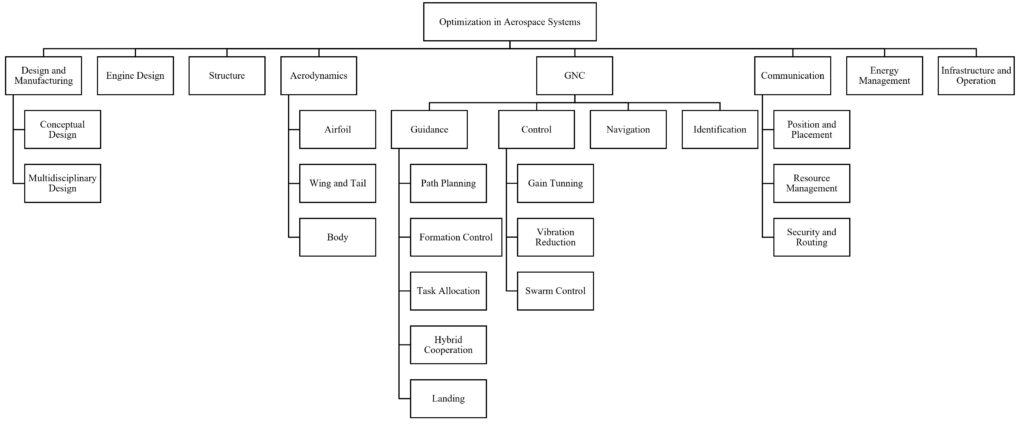
Almost all of our selected algorithms were used in GNC problems, this is while for other applications like body design, structure, engine design, or conceptual design there were very few algorithms. The most popular algorithms which were used in almost all applications were unsurprisingly GA and PSO.
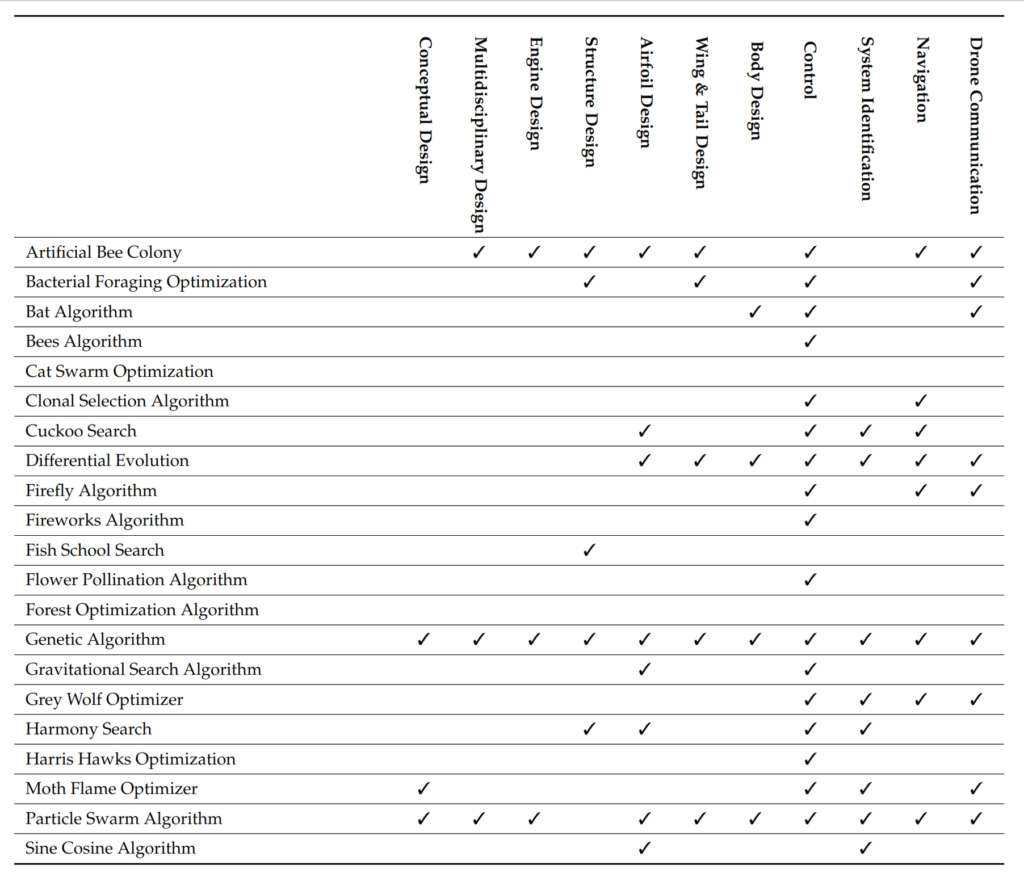
We believe there are still too much to be done in intersection of aerospace engineering and NIAs. There are many good algorithms like HHO and an increasing list of hybrid algorithms which are highly effective in aerospace problems and specifically control systems. Many applications in control systems like path planning, target tracking, parameter tuning, optimal landing,… are based on optimization processes. NIAs are general purpose algorithms that can solve these complex problems very fast and accurate.
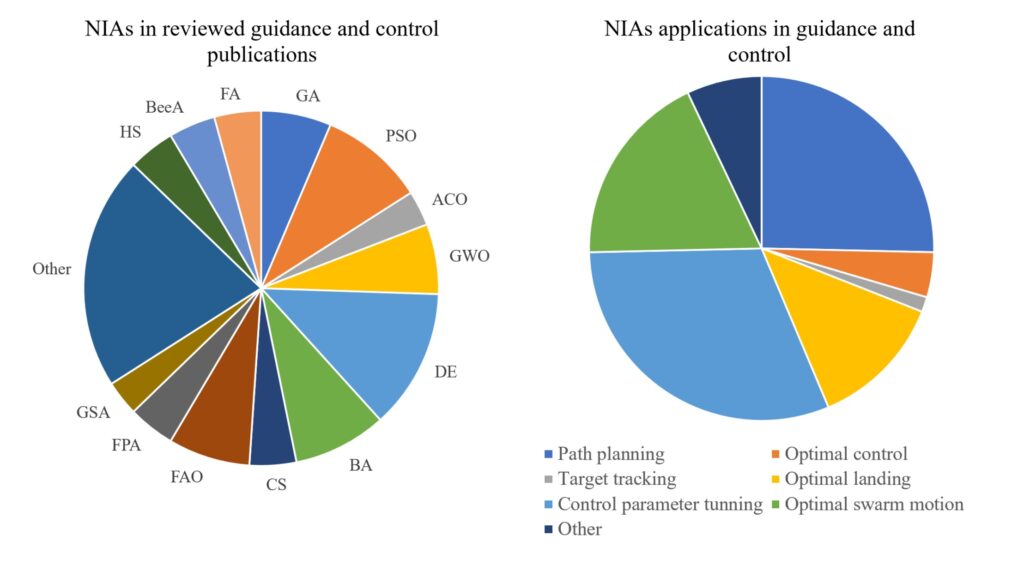
We have prepared an optimization package for python called NIA which that can help you in your projects. There is also a blog post on my site about this package. We may conduct more research on this field in the near future, your comments and opinions are of course highly appreciated.

